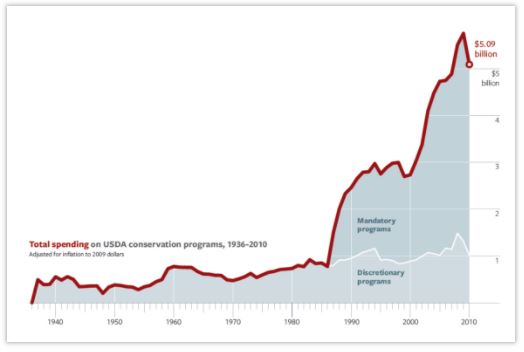WASHINGTON, Oct. 4, 2017 – Over the last few decades, U.S. farmers have made great strides in conserving soil and enhancing water quality, but there’s a growing concern that more can be done, especially on water quality. At the same time, there’s a realization that the amount of federal dollars to assist in this effort may be shrinking, rather than growing. So, what’s the best way to address this challenge?
That’s been one of the key questions for a group of veteran conservation leaders who have been meeting for about two years with the McGraw Center for Conservation Leadership, says long-time conservation policy expert Alex Echols, who served as the group's team leader. Their answers are now part of a new white paper, “Heartland Waters Initiative, Advancing Precision Conservation in Agriculture” which they hope will gain consideration in the next farm bill. Several familiar names are on the team, including Chris Adamo, Dave Gagner, Lynn Tjeerdsma, and Roger Wolf.
“We really believe that, if we can align the economic opportunities with the conservation opportunities, we can significantly increase adoption,” says Echols.
A key theme of the white paper is the use of science and technology, like yield monitors and GPS, to more precisely focus conservation investments where they can generate the most economic and resource “bang for the buck”. The report also calls for the creation of a new finance mechanism.
( Interested in following conservation issues in the next farm bill? Agri-Pulse is your source for the most trusted and balanced information. Sign up for a free trial here. )

USDA conservation program spending, 1936-2010. Source: Heartland Waters Initiative
“We should move beyond government subsidies and enable large-scale investments from multiple sectors. Permit holders outside of agriculture, such as wastewater treatment facilities or industry can meet environmental performance requirements at a lower cost,” the report notes, while proposing a revolving “agricultural conservation fund” to be authorized through the farm bill.
In all, the white paper offers nine different strategies to improve conservation. Other recommendations include: countercyclical payments and insurance reductions to participating producers, improved water management practices, creation of a targeted conservation investment grant programs with states; adjustments in terms for conservation actions, more research on performance outcomes, and outreach to renters and non-operating landlords. For the full report, click here.
#30
For more news, go to www.Agri-Pulse.com


